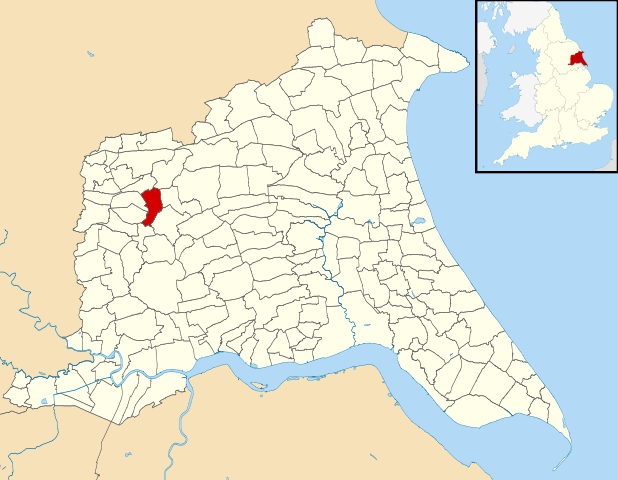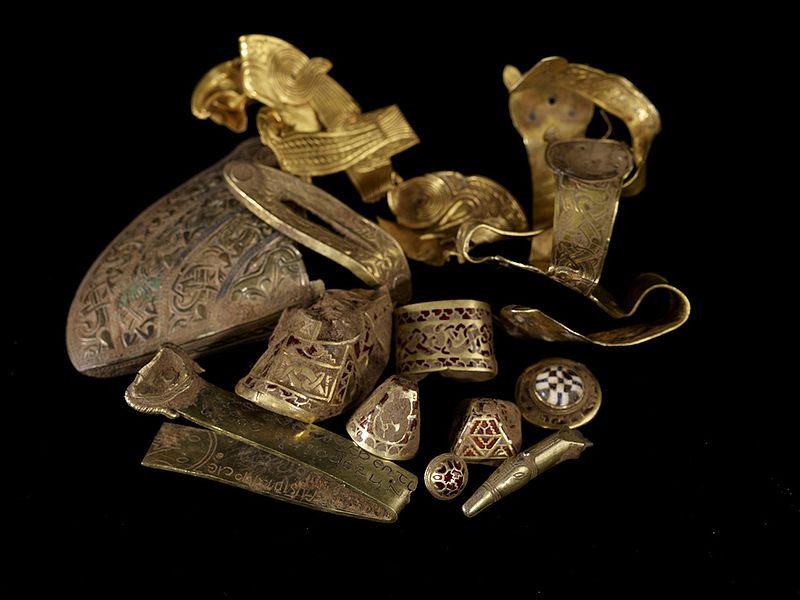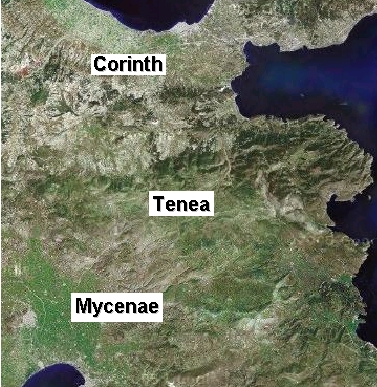The East Yorkshire Celtic burial complex
Archaeologists have found a unique chariot grave in a Celtic burial complex near Pocklington, Yorkshire. This burial occurred between 320 B.C.E to 174 B.C.E. It has three distinct features. First, people had placed two horses in the grave. No other British chariot burial included horses. Second, the shield had seen combat. Prior shield discoveries appeared to have only had a ceremonial use. Third, the shield has a scalloped border No other iron age shield found in Europe has such a border.

Caption: “Map of the East Riding of Yorkshire, England, with Pocklington Parish highlighted Credit: Ordnance Survey data- Crown copyright [CC BY-SA 3.0 ]
The Grave of the Warrior with Horses
The burial had a dramatic design. The body was in the chariot. The horses looked as if they were leaping out of the grave. Smaller than modern horses, these horses looked more like ponies.
No one knows the meaning of Celtic chariot burials. Maybe the deceased would use the chariot to travel to the other world. Maybe the deceased would use the chariot to travel around the other world. Maybe the deceased would use the chariot to do battle in the other world.
This grave contained a decorated shield. It has a swirling pattern with triple spiral motifs in the La Tene style, and a scalloped border. In some battle, someone had slashed it. It had signs of other repairs.
At death, the deceased was older than 46. He had some non-fatal injuries. He may have died of natural causes. Bones of six piglets surrounded his head. He had a decorative bronze and red glass dragonfly brooch. The chariot burial, the six piglets, the shield, and the two horses indicate the deceased had a high status.
The Celtic burial complex of East Yorkshire
The Grave of the Warrior with Horses lies in a Celtic burial complex in East Yorkshire. About 60 m (196.85 ft) from the grave of Warrior with Horses, the Speared Warrior had been buried. He was between 17 and 25 at the time of death. Someone had ritually speared him with 10 iron and bone spears. The grave of the Speared Warrior contained fragments of a broken shield.
In this East Yorkshire funerary complex, archaeologists have found 142 skeletons. According to Archeaology.org, the burial complex contained two areas. In the high-status area, graves tended to be ornate with swords, shields, brooches, and bangles.
The Yorkshire Archaeological & Historical Society linked this complex with the Arras culture. That culture existed in East Yorkshire and northern France. The Arras had a La Tene style of decor.
The next step will involve DNA and isotope testing to identify the genetics and geographic origin of those buried at this site.

A hilt fitting from the Staffordshire hoar: credit portableantiquities [CC BY 2.0]
The Staffordshire Hoard
Hammerwich, Staffordshire, England. In July of 2009, Terry Herbert with only a metal detector found a major collection of Anglo Saxon objects. That collection included almost 4,000 fragments of about 100 whole items. All items belonged to the male warrior class. They included sword fittings, helmets, as well as some Christian religious objects. Archaeologists have just completed a 10-year study of this find, the “Staffordshire Hoard.”
Some of these fragments were made of gold. The low copper content of the gold found indicated that it came from melted coinage. Nicholas Brooks of the University of Birmingham said that this might indicate a change from an exchange economy based on money to the gift-based economy that Anglo-Saxon kings favored.
These objects dated from 570 to 650 C.E., slightly after the time of the Arthurian legends. At that time, Anglo-Saxon kingdoms were fighting each other. Christian missionaries were trying to re-introduce Christianity. Celtic Britons may have fled to Wales/Cymru. Others may have remained.
If someone had buried these fragments of objects for safekeeping, they would have left them whole. Archaeologists have theorized that this hoard could have been an offering to an unidentified god.
While none of the news reports mentioned it, the Celts ritually broke items that they sacrificed to the gods. This could indicate the survival of Pagan Celtic practices into the Anglo-Saxon period.

Broken fragments of sword hilts, helmets etc. from the Staffordshire Hoard: David Rowan, Birmingham Museum and Art Gallery [CC BY 2.0]
The discovery of the Greek city of Tenea
Chiliomodi, Greece. Archaeologist Elena Korka has identified the location of the Greek city of Tenea. Pausanias, Greek geographer, 110 to 180 C.E., wrote that Trojan prisoners of war had founded Tenea. Agamemnon had brought them to Greece after the fall of Troy. Its major temple was that of Apollo who had sided with the Trojans in the war. Lead archaeologist Elena Korka reported that its citizens were “remarkably affluent”

Tenea (Τενέα), an ancient city in North-East Peloponnese, Greece: Credit Odysses [Public domain]
Peruvian Water Temper
Zaña Valley River, Peru. Archaeologists have found a 3000-year-old temple in the Huaca El Toro site in the Lambayeque region of Peru. The temple measures 39.93 m (131 ft) long. People used this temple from 1000 to 250 B.C.E. Locals had built a series of small wells, “pocitos” surrounding the temple. Archaeologists found a man buried in the temple. He had a ceramic bottle with two spouts and a bridge handle. It lay between two rivers, where they combined to form a third river. Archaeologist Edgar Bracamonte suggested that its location amounted to “territorial symbolism.”
A new Troy resources
An interactive map of ancient Troy is available online. This site allows the viewer to learn about each of the nine stages of Troy.
The Wild Hunt is not responsible for links to external content.
To join a conversation on this post:
Visit our The Wild Hunt subreddit! Point your favorite browser to https://www.reddit.com/r/The_Wild_Hunt_News/, then click “JOIN”. Make sure to click the bell, too, to be notified of new articles posted to our subreddit.